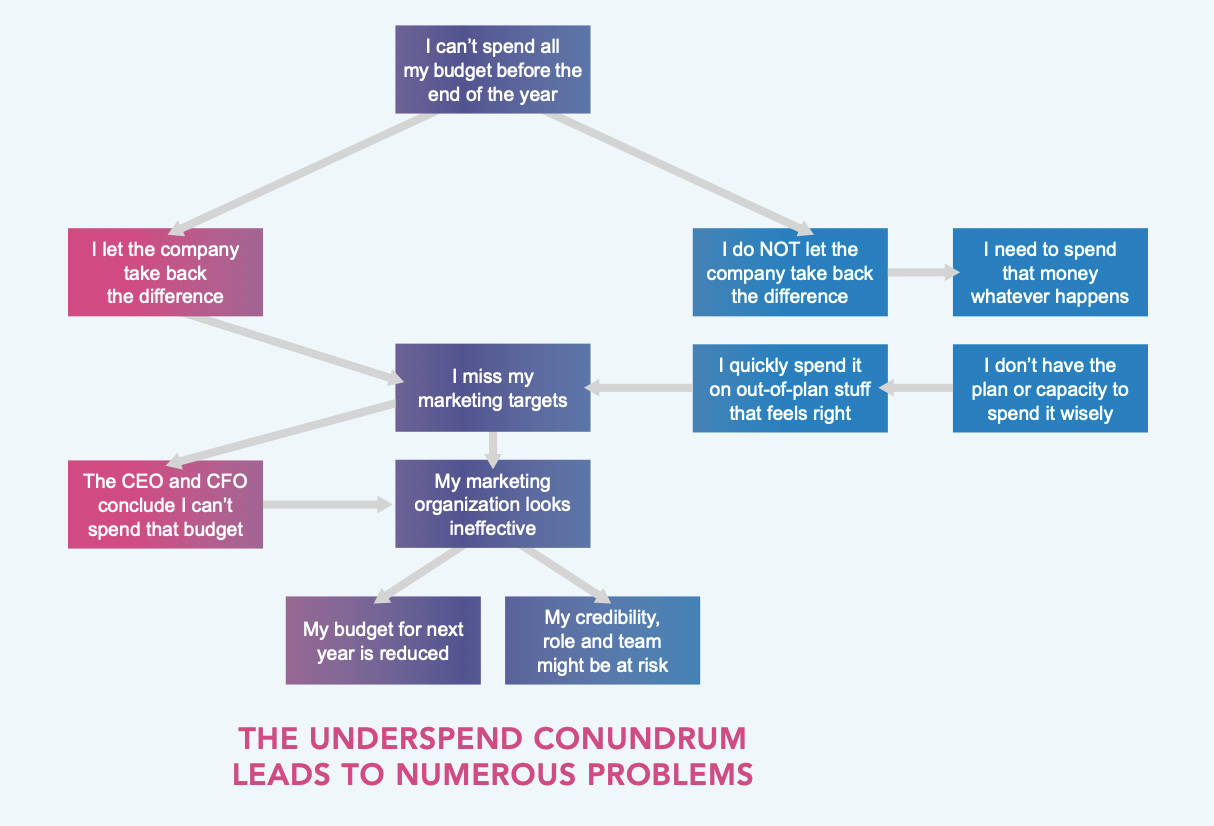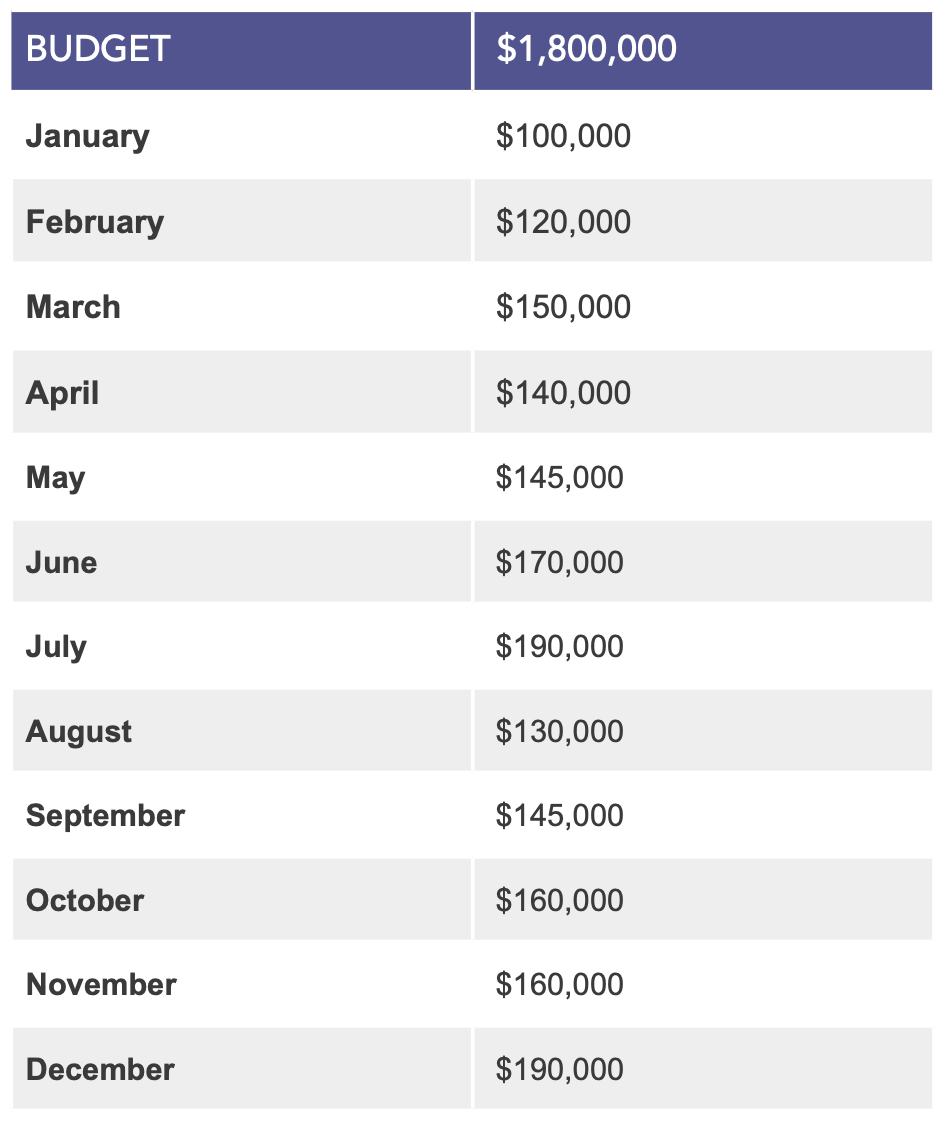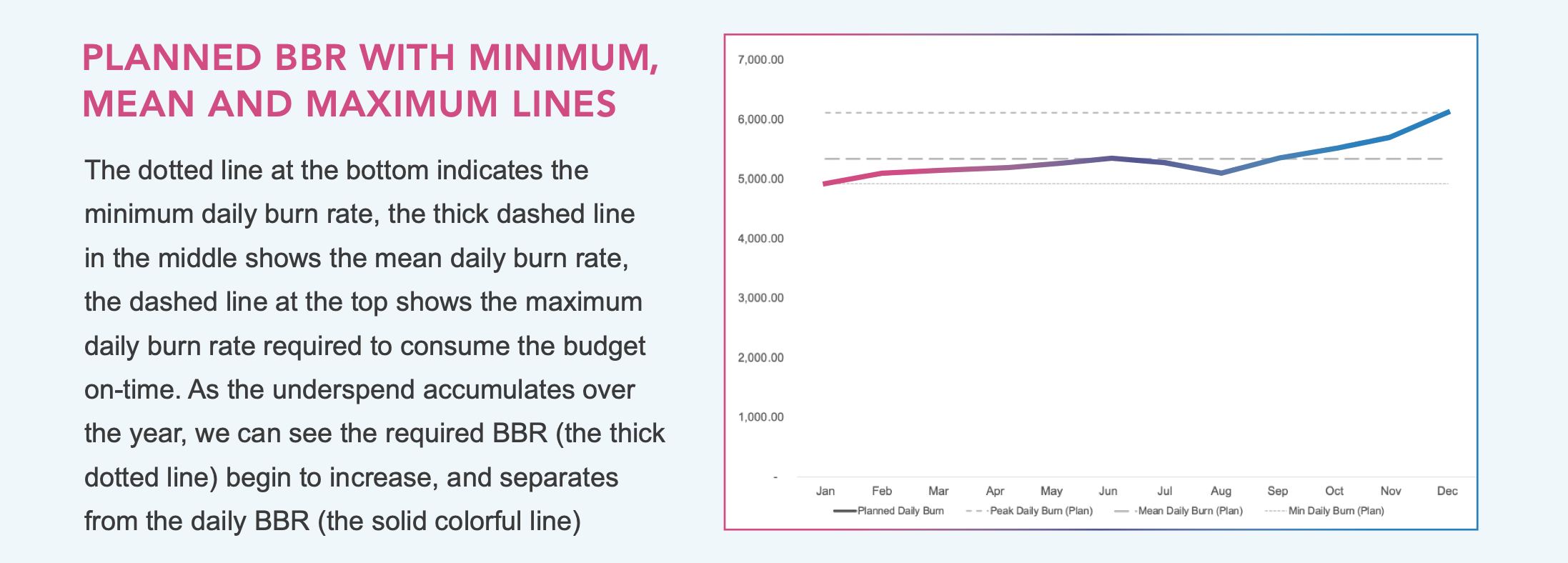Explore Solution Hub - our brand new library of pre-built solutions and interactive tours
Learn More →What is Budget Burn Rate (BBR)?

We know that responsible marketing teams should not overspend. It causes P&L issues, can disrupt the marketing cadence if campaigns have to be canceled due to exhausted budget, and leads to general disharmony. Something that receives less attention, but is equally important, is marketing underspend.
The Underspend Conundrum
Marketing needs to spend 100% of its budget, spend it promptly, and spend it thoughtfully. If this seems obvious, it isn’t to many marketers and corporate cultures that think it is a virtue to come in under budget. It is not. It’s a virtue to spend less on electricity than you intended, or to implement a corporate IT project under budget. But marketing underspend fails the business and can lead to unwanted consequences, as illustrated below.

If marketing underspends, then it breaks its agreement with the company about what it is going to deliver
in terms of pipeline, leads, brand enhancements, awareness, and so on. In an ideal world, a marketing team spends every penny of its budget aligned with marketing goals and against a well-structured plan. In our OMI survey, Less than 50% of marketers can see what marketing budget is available.
The first step is to move your plan and budget onto software that provides real-time visibility into planned, committed, and invoiced expenditures. You don’t have to wait for the final payments to be made by finance, and then to receive the accounts payable or open PO report to have that current visibility. You just need a system to track it. You can always interlock to the penny with the finance system once their reports land in your inbox, but there is no need to fly blind in the meantime.
Another key step you can take is to get familiar with the concept of Budget Burn Rate (BBR). After you finalize your marketing plan and budget, marketing needs to have in place a staffing and resource capacity (or at least a capacity plan) to execute the plan and spend the budget within the fiscal year. Are there enough full-time employees, contractors, consultants, agencies, tools, etc., in place to actually deliver the plan that’s on paper?
Most marketing teams have some degree of interlock between their marketing budget and their capacity
to spend that budget in a thoughtful way. We only care about this assertion in the abstract for now. It’s true that a small team that solely builds digital campaigns can burn through a huge budget quickly in comparison to field marketing and regional events. However, we believe that the capacity of a marketing team (not just FTEs, but all contract labor and agencies as well) is normally at least roughly right-sized to the nature of the marketing plan, its required campaigns and tactics, and the size of the budget to support it.
Budget Burn Rate (BBR) is a function of change, like miles per hour, gross domestic product per capita, calories per slice of pizza, etc. In the case of BBR, we are measuring how much budget needs to be spent per time period for the remainder of the year in order to consume 100% of the budget accurately and in alignment with the marketing plan. We’ve picked a day as the unit of time. It could be a week or a month, but the bigger the time unit, the less granularity we have.
Imagine you have a budget of $1,800,000 for a fiscal year. Regardless of how you intend to allocate the budget over time and by campaign, you need to consume that budget in the next 365 days. On day
1 of your fiscal year, your required average BBR is $1,800,000/365 = $4,932/day.
Now let’s assume that you decide to allocate your budget across the months like this:
 ‘
‘
It doesn’t matter that the allocations by month are different from each other, nor that the most expensive months require the team to consume 190% of the least expensive month’s budget. We assume that there is a marketing capacity in place that is right-sized to consume this budget at this rate over the course of the entire year.
After January, there are 334 days left, and if the entire $100K that was budgeted for January has been spent, the required BBR for the remainder of the year is now ($1,800,000 – $100,000)/334 = $5,090/day. If the budget is spent perfectly, here’s what the curve for the daily BBR looks like over the course of the year:

As the underspend piles up month to month, the required BBR accelerates away from the planned BBR. This is because the time available to spend the rolled forward budget is running out— there’s more money to spend than we thought there would be in a shrinking time frame. We’re about to hit the end-of-year wall. Concluded in our OMI survey, Less than 40% of marketers have a system for easily identifying and reallocating unused budget.
Imagine you are the CMO running this budget and it’s November. You have a lot of money to spend. Your team is fully occupied executing as much of the plan as they can, but they’ve been consistently under-spending throughout the year. What are you going to do? You need to spend twice as much money as you normally spend through the rest of the year and your team is fully occupied. Look back again at the Underspend Conundrum flow chart above and you will see there are not many good choices. Marketing teams find themselves in this position all the time.
As the gap begins to widen, the risk increases. Before it approaches your maximum team capacity, you need to begin to increase your BBR so that you can pull the actual BBR line back in order to match the planned BBR line. Perhaps you need to hire some more temp help or open the throttle on that digital campaign. The remediation is case-dependent, but the value of bringing the current and plan BBR into alignment is clear—it means you can finish the year spending your money intentionally, phased appropriately over time, and in accordance with your strategic goals. If you’d been measuring BBR, you would have seen this move of the actual BBR line towards your maximum capacity early in the year. This would have prompted you to take action while still in the first half of the year.

Dan Faulkner is co-author of The Next CMO: a guide to operational marketing excellence, and the CTO of Planful, where he is responsible for the technical strategy and delivery of the world’s first AI-powered marketing management platform. Dan has 25 years of high-tech experience, spanning research and development, product management, strategy, and general management. He has deep international experience, having led businesses in Europe, Asia, North America, and South America, delivering complex AI solutions at scale to numerous industries. Dan holds a Bachelor’s degree in Linguistics, and Masters degrees in Speech & Language Processing, and Marketing. He has completed studies in Strategy Implementation at Wharton.
Latest Posts
Blogs
Interviews, tips, guides, industry best practices, and news.
